The Nordic Way



Kastelholm Castle, a medieval fortress built by the Swedes, stands near Road 2 in Sund, Åland, Finland. Located about 25 km northeast of Mariehamn, it overlooks a scenic fjord south of the village of Kastelholm, offering visitors a glimpse into Nordic history and architecture.

06 COMMENT
Building a Greener Future
08 H.E. PERNILLE DAHLER KARDEL
Ambassador of Denmark to Serbia Committed to Climate Action and Global Security
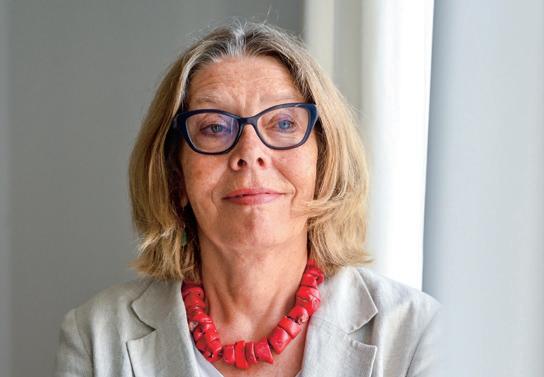

10 H.E. NIKLAS LINDQVIST
Ambassador of Finland to Serbia On the Same Page

12 H.E. KRISTIN MELSOM
Ambassador of Norway to Serbia Supporting Serbia’s Green Energy Transition

14 ASTRAZENECA
Swedish Expertise in the Fight Against Cancer
16 H.E. CHARLOTTE SABINA SAMMELIN
Ambassador of Sweden to Serbia
Proud to be a Top Bilateral Donor
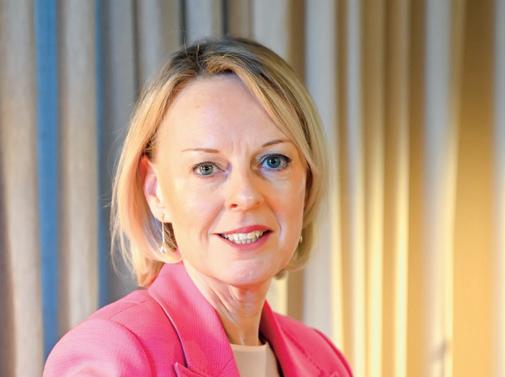
18 ELNOS GROUP
Leading the Nordic Market
19 RECONOMY PROJECT Navigating the Road Ahead 20 Jelena ČavkunovićBelokapić
Medicon Vice President Innovative Solutions for Quality of Life
21 Antonio Passarella
Ericsson Serbia Country Manager and Head of Ericsson for the Western Balkans
5G Technology is Crucial for the Future

22 Iva Petrović
Executive Director, Nordic Business Alliance
Transforming Towards Smart Cities

24 The Nordic Welfare Model A Catalyst for Economic Growth
26 Inovations
Journey to a Smarter Future
28 Tourism The Allure of the North

Relations between the Nordic countries and Serbia, which continue to grow and develop, promise a future of deeper integration and mutual benefits across various sectors

This partnership is a prime example of how international cooperation can accelerate sustainable development. Serbia and the Nordic countries—Denmark, Finland, Norway and Sweden—are focusing their collaboration on key areas like the green transition, digitalisation and innovation. These efforts not only promote sustainable growth, but also enable Serbia to align more closely with European standards as it progresses towards EU accession.
The green transition has become a standout area in Serbia’s cooperation with the Nordic countries, all of which are recognised globally as leaders of sustainability. They are working together to reform
Serbia’s energy sector and harmonise it with European environmental standards. With the Nordic countries serving as role models, Serbia is eager to avoid repeating past environmental missteps and to adopt practices that ensure sustainable development.
Initiatives like Nordic Green – Sustainable Solutions for Serbia have provided valuable expertise in circular economy principles, waste management and renewable energy. These initiatives are being reinforced by high profile events like the Western Balkans Energy Conference and
the Western Balkans Energy Roadshow. An emerging focus is smart cities—an effort that’s being actively promoted by the Nordic Business Alliance (NBA). Through collaboration with local governments and Nordic Edge, Serbia has begun implementing smart city roadmaps, fostering digital governance and enhancing public infrastructure. This aligns with the state’s broader ambitions to build inclusive, digitally-advanced communities—an area where the Nordic countries excel.
The partnership has expanded in 2024 to encompass healthcare, digitalisation and education, reflecting the wide-ranging potential of this cooperation. Serbia’s preparation for the launch of a 5G network has further deepened Nordic involvement, with Nordic partners providing expertise and resources to support the digital transition. Moreover, Nordic countries are collaborating with Serbia to enhance its institutional capacity and governance through public-private partnerships, particularly in managing environmental regulations, energy reforms and infrastructure projects.
Nordic companies invest actively in Serbia, bringing knowledge and capital to sectors like wind and solar power, as well as waste management. These investments aim to position Serbia as an attractive destination for future green energy projects. This collaboration also involves developing strategic energy plans for 2040 and beyond, thus helping Serbia establish a longterm framework for sustainability.
Nordic embassies in Serbia play a key role in facilitating interactions between businesses and local institutions, promoting sustainable investments and strengthening business ties.
Serbia and Denmark maintain strong economic and political ties, while there are plans to strengthen them during Denmark’s EU presidency in second half of 2025
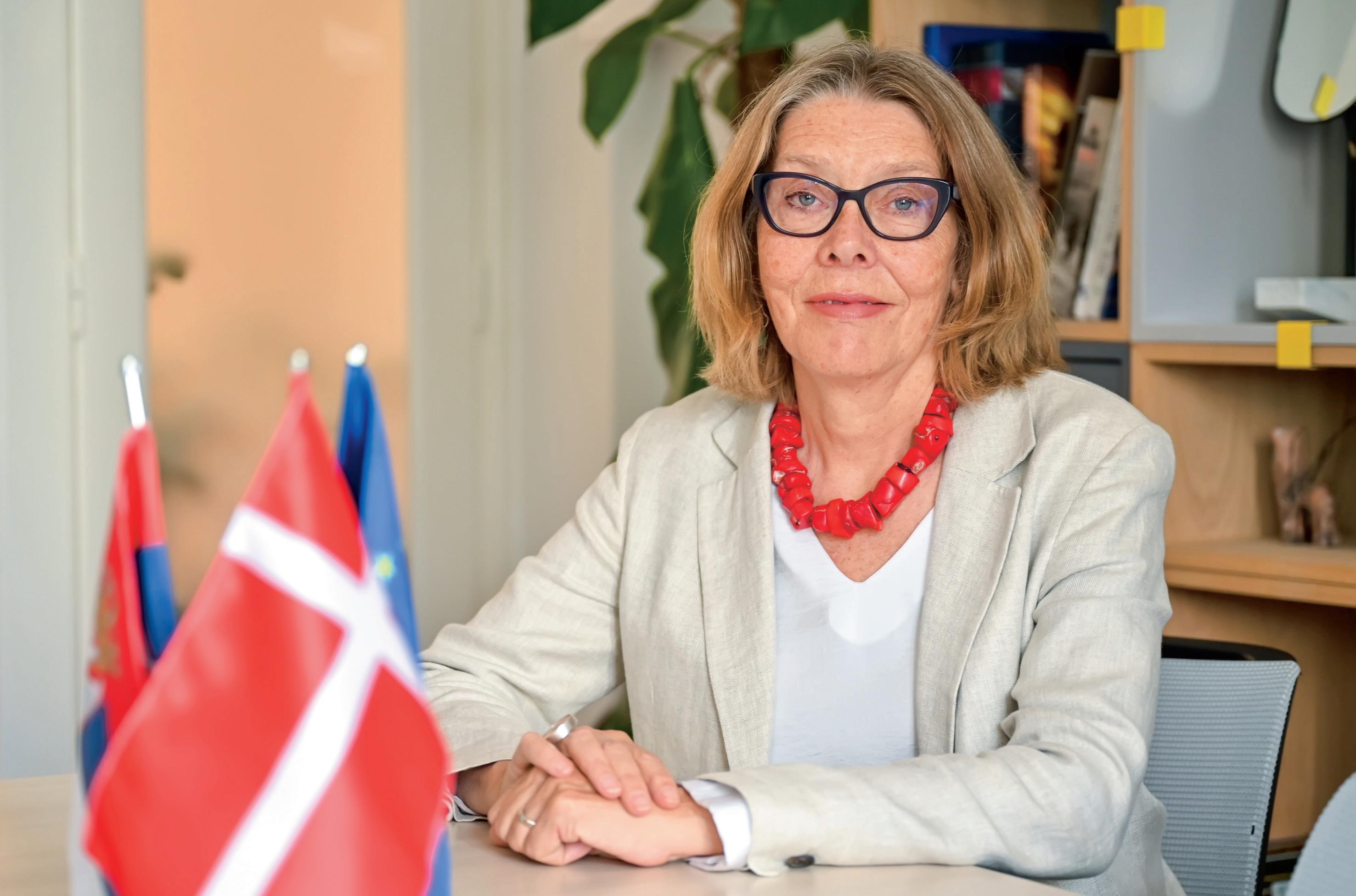
From 1st January 2025, Denmark will hold a seat in the UN Security Council as an elected member for two years. In these days when we are witnessing so many armed conflicts around the world, Denmark will continue to work towards peace and security within national contexts and globally, explains Danish Ambassador to Serbia H.E. Pernille Dahler Kardel.
“We are very honoured to serve on the Council and our membership is a continuation of our strong and longstanding commitment to the UN and multilateralism. As a member, Denmark will strive towards the Council playing its role regarding the challenges to international peace and se-
curity. Across the range of issues on the Council’s agenda, we will stand up for international law, including international humanitarian law and accountability. We will also address the impacts of climate change on peace and security, and adapt conflict responses and prevention to new realities, just as we will ensure that women’s voices are heard and included.
We look forward to gaining Serbia’s perspective on how we can best turn the principles of Resolution 1325, regarding Women, Peace and Security, into practice
As we know, women’s rights and gender equality are often at risk in such conflict situations, but also in everyday life. How does Denmark approach these issues, and which experiences do you think could be valuable for Serbia?
— In conflict situations, we know that women and girls are often at very serious risk. Yet their voices are most often unheard in efforts to resolve conflicts. It has been almost 25 years since the Security Council recognised women’s rights as integral and essential to achieving lasting peace. Even so, much remains to be done. As a member of the Security Council, Denmark will work to close the persistent gap between rhetoric and reality. We will be working with other member states, with the women affected by conflicts and other stakeholders. We are looking forward to getting Serbia’s perspective on how to best turn the principles of Resolution 1325, regarding Women, Peace and Security, into practice.
Sustainability, energy transition and the preservation of nature are common themes in the collaboration between the Nordic countries and Serbia. What would you highlight as the most notable expertise that Denmark would like to share in supporting our approach to the green agenda?
— Climate change is an existential threat for many countries, while for others it is a risk multiplier. As a member of the Security Council, Denmark will push to advance a comprehensive evidence-based understanding of the links between climate, peace and security.
Denmark’s own green transition started in the 1970s, with the first steps towards establishing wind energy as a viable and competitive energy source. In 2020, Denmark legislated our ambitious target of reducing CO2 by 70% by 2030. The government’s desire is to advance the climate neutrality goal to 2045. We are achieving ambitious reductions through a unique partnership between the private sector, researchers and the government. The path to achieving our goal has been developed in 14 sector specific climate partnerships. We are leading the world in the decarbonisation of the shipping sector, where Danish company MAERSK is taking the lead. Through companies like Orsted, Copenhagen Infrastructure Partners and European Energy, we are leading the world in building offshore wind capacities, just as these companies play an important role in developing new sources of energy. Vestas is a world leader when it comes to wind turbines, while Danish electricity net administrator Energinet is leading the world in finding solutions to grid issues as we increase the green en-

Denmark aims to cut CO2 emissions by 70% by 2030 and to achieve climate neutrality by 2045, through climate action partnerships between the private sector, researchers and the government
We very much support the EU’s renewed focus on enlargement, with a newly appointed Commissioner whose sole responsibility is enlargement
Denmark is looking forward to developing relationships with Serbia in green transition, clean energy, water technology and sustainability
ergy proportion of our electricity consumption towards 100%.
Likewise, in the field of energy efficiency and district heating, we have several companies that deliver solutions to the global market, such as Danfoss, Velux, Rockwool and many more. The Danish water industry holds a global leadership position in the development and export of efficiency and sustainability-focused water technology, with globally acclaimed companies like Grundfos and AVK. We look forward to further developing cooperation with Serbia in all these fields.
Swimming in Copenhagen harbour became possible in the 1990s, after the city authorities decided to invest in expanding wastewater treatment plants and sewage infrastructure. What lessons can we learn from your approach to reclaiming bodies of water for public use?
— The transformation of Copenhagen’s harbour into a clean, swimmable public space stands as a testament to Denmark’s commitment to environmental stewardship and urban liveability. That required political will and long-term planning. A strong commitment to clean water and public health was the driving force.
Many cities in Serbia are situated along the banks of rivers like the Danube, Sava or Morava. All these places have massive potential to improve water quality in such a way that citizens could want to dive into the rivers. However, this is by no means an easy feat and will require extensive long-term planning.
Apart from the green agenda, what would you identify as major areas of assistance in which Denmark is supporting Serbia’s EU accession process?
— In our view, Serbia is an obvious potential EU member state – just like the other Western Balkan countries. We very much support the EU’s renewed focus on enlargement, including with a newly appointed Commissioner whose sole responsibility is enlargement. We recognise that the process of reaching the Copenhagen Criteria is challenging, but it is nonetheless essential, as membership will continue to be merit-based. Over the past few years, three Danish foreign ministers have visited Belgrade to discuss this issue with their Serbian counterparts. And our newly appointed Minister for European Affairs and Danish MPs will soon be here to dive deeper into this discussion. The ties between Serbia and Denmark are strong, economically as well as politically, and we look forward to building on that when Denmark holds the EU presidency in the second half of 2025.
Economic growth must be environmentally friendly, with green transition providing a chance to attract investment, create jobs and boost local businesses – and this is already recognised by many in Serbia ~ H.E. Niklas Lindqvist
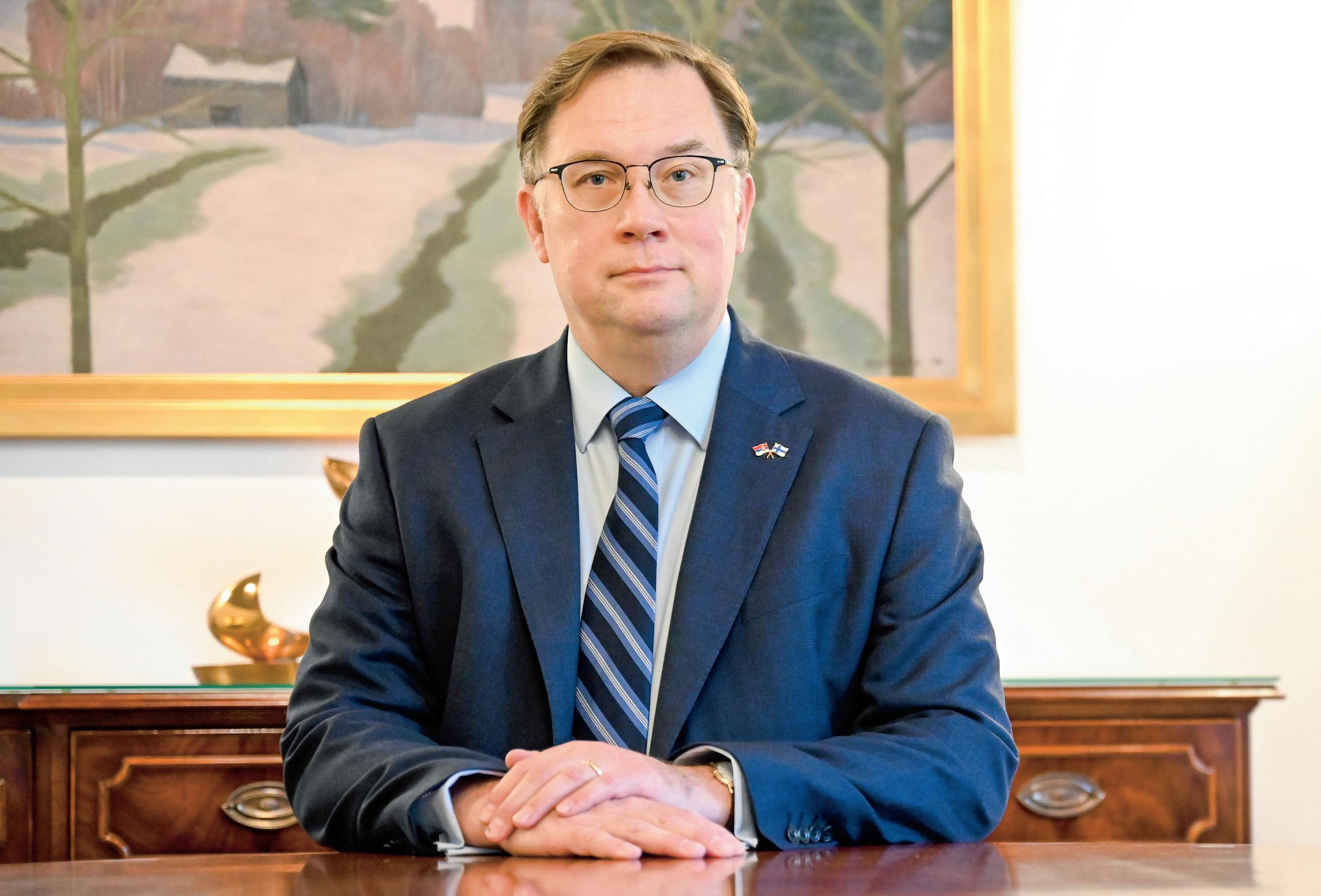
Technological advances and increased productivity are critical topics across Europe, particularly among the Nordic countries, which are pioneers in these areas. Finnish ambassador H.E. Niklas Lindqvist believes that demand for sustainable products and solutions will experience strong growth in the coming years and that the Serbian manufacturing industry can benefit from this by improving its efficiency, implementing environmental standards, emphasising sustainability etc.
“This will help them stay competitive at the European and global levels,” explains Lindqvist.
“In Finland, digitalisation is a dominant feature of sustainable manufacturing and we constant-
ly rank among the most digitally advanced countries in the EU,” notes the ambassador. “New technologies, including automation, robotics, electric vehicles, renewable energy, biotechnologies and artificial intelligence, have immense potential to foster growth, prosperity and environmental sustainability.”
Serbia must achieve significantly higher economic growth than the EU average if it is to catch up in the long run. Despite being challenging, this is essential to keep pace with the more advanced EU economies
He believes that companies in Serbia have already realised the urgent need to adapt to new EU standards in order to remain competitive on the EU market. “These standards include carbon-pricing policies, sustainable and responsible corporate conduct, human rights, prevention of environmental violations etc. It is important to note that adherence to these standards applies to companies both inside and outside the EU,” says Lindqvist.
How do you support Serbia’s transition to a market economy through bilateral relations and within the Nordic alliance?
— I always mention that it is essential to create economic growth in an environmentally friendly fashion and that the green transition should be seen as an opportunity to attract new investments, create jobs and strengthen the local market and businesses. It is encouraging to see that many local companies have realised this in Serbia.
The Nordic embassies have implemented numerous joint projects in Serbia promoting such topics as innovation, public procurement, digitalisation, corporate social responsibility, circular economy and green transition.
Throughout 2025, the Embassy of Finland, together with the other Nordic embassies in Belgrade and the Nordic Business Alliance, will organise a series of events around the theme of Smart Cities. We will share Nordic knowhow and build partnerships with Serbian institutions and companies. We also want to raise awareness among local decision-makers and businesses about the need to work together to achieve a healthier environment for all citizens while developing a sustainable economy.
Education and innovation are the cornerstones of the remarkable achievements of Finnish society. From your perspective, what are the most important skills for the 21st century; and how can we incorporate them into our education system?
— Finland has one of the highest-ranking education systems in the world and it is truly one of the cornerstones of Finnish society. We particularly pride ourselves on an education system that offers equal educational opportunities for all. The Finnish education system is built on the belief that a nation can only fulfil its human and economic potential if every citizen has the opportunity to achieve their own personal potential. By prioritising equity, play-based learning, teacher professionalism and student wellbeing, Finland has created an educational framework that fosters happiness, resilience and success among its citizens.

Throughout 2025, the Embassy of Finland, Nordic embassies in Belgrade and the Nordic Business Alliance will host events on Smart Cities
The Finnish education system is based on the idea that a country can reach its full potential only when all citizens can achieve their personal potential
SUPPORT
The Finnish Embassy is sending startups from Serbia and the region to the Slush conference in Helsinki, in order to connect with investors and media
Our strengths lie in excellent, relatively equal learning outcomes, a high education level, a healthy work-life balance, and the flexibility of the education system that makes it possible to adapt swiftly to new technologies. In the Finnish education system, digital and artificial intelligence skills, media literacy and multi literacy, environmental education, respect for other people and interaction skills are as important as more traditional subjects, such as mathematics, arts and crafts.
It is important to understand that our education system didn’t develop overnight. It has taken decades and many reforms to get to where we are now. We have developed education in a systematic way and in broad cooperation with all stakeholders, while there is strong collaboration between Finnish universities, research institutes, industries, the government and other stakeholders.
We are seeing a growing number of start-ups in Serbia, with a significant portion focusing on agri-tech and other green solutions. Do you see potential for collaboration with their Finnish counterparts and Finnish companies generally?
— Finnish companies and institutions see the global transition towards a circular and carbon-neutral economy as an opportunity to solve global challenges. It is almost a requirement for all Finnish start-up solutions to include a green component. Our companies are increasingly developing green solutions in cooperation with their counterparts from other markets. This means that there is definitely potential for increased cooperation between start-ups from Serbia and Finland. We see this potential in every sector, but particularly in the green transition.
It is important to promote cooperation among start-ups and institutions involved in innovation ecosystems. In cooperation with the EBRD and other local institutions, the Finnish Embassy is sending representatives of Serbian start-ups, as well as other startups from the region, to the Slush conference in Helsinki, which takes place from 20th to 21st November. The Slush conference is one of the largest events that brings together Europe’s start-up and innovation community. At Slush, Serbian start-ups will have an opportunity to present themselves to a large number of investors and media, and to connect with relevant counterparts.
We last year also had a delegation from Serbia visiting the World Circular Economy Forum in Helsinki. This delegation also included Serbian start-ups that focus on innovative solutions and circular economy principles.
Serbia is advancing on its green energy agenda with ambitious reforms that are supported by Norwegian expertise and that balance environmental concerns and EU integration efforts

Serbia is working hard to enhance its energy production potential, and all existing plans and projects form part of a green agenda, says H.E. Kristin Melsom, Ambassador of Norway to Serbia. In that respect, the county has set some quite ambitious goals in the energy sector for the next decade, notes our interlocutor.
“When it comes to the reform process at EPS [electric utility power company Elektroprivreda Srbije], in which Norwegian experts participated
more actively, I can say that I am proud that we were approached by the Serbian side and glad that we were perceived as a trusted and knowledgeable partner. As far as I know, this process
I am optimistic that the next crucial step – with the start of the new EU Commission’s term – will be the opening of Cluster 3 in Serbia’s EU accession negotiations
is ongoing. This is a new concept for Serbia and changes take time. A lot of adjustments need to be made to completely transform EPS into an efficient state company that operates successfully under free market conditions. EPS definitely has the potential to become one of the most influential energy companies in the region,” says Ambassador Melsom.
When it comes to expertise, Norway has vast experience in hydro energy and, as of more recently, in new technologies and innovation. “The way we govern our state-owned energy companies proves successful, as they are among the top energy companies in Europe. That said, we should keep in mind that the biggest drivers to complement expertise are political will and access to resources,” notes our interlocutor. “A common platform and close cooperation between all key players in the region, as well as making EU ETS funds available to Western Balkan countries, could be the magic formula to fast-track transformation of the energy sector across the entire region.”
You spoke recently to the Speaker of the Serbian National Assembly about critical mineral resources and Norway’s experience in this area. What are your main suggestions for the preserving of nature in this context?
— This is indeed a significant and complex issue for any country, not just Serbia. Whereas the green transition is both an imperative and our best growth strategy, it is not free of dilemmas and challenges. We also experience these concerns in Norway. Mining will always impact nature; the question is how to strike a balance between Europe’s need for critical minerals and the need to preserve our environment. The process leading to a decision is important. We believe in an open and inclusive dialogue with all stakeholders, ensuring that all voices are heard and considered in the decision-making process. It is important for the information provided to the public to be factual and correct, and communicated in a way that everyone can understand.
Serbia is at the very beginning when it comes to addressing wastewater treatment. How has Norway approached these tremendously important but costly solutions?
— Norway has many companies with innovative waste management solutions, but I would like to mention Cambi, the company that is present in Serbia. Cambi delivers innovative solutions that enable utilities to manage sewage sludge from

A common platform and close cooperation among all key players in the region could be the magic formula to fast-track transformation of the energy sector across the entire region
I’m proud that the Serbian side sought our involvement in the reform of EPS and glad that we were seen as a trusted, knowledgeable partner
Mining always impacts nature, and the challenge is to balance Europe’s demand for critical minerals with environmental preservation. The decision-making process is important
wastewater treatment plants and waste processing plants. This is an optimal solution for the wastewater treatment plants of larger cities. Many cities around the globe, including Brussels, London and Washington, use Cambi solutions to ease the management of sludge at wastewater treatment plants, rendering it cheaper and more sustainable. What distinguishes them from others is the so-called thermal hydrolysis process, or THP, which has the lowest carbon footprint of all sludge treatment methods. This process enables the extracting of up to 50% more biogases compared to conventional anaerobic digestion, while the sludge is also transformed into biosolids that can be used as fertiliser. This makes it a perfect circular economy process.
As Serbia progresses in its EU integration process, what do you consider as being the next critical frontier?
— It is clear that full EU membership remains a strategic objective for Serbia’s political leadership. We are witnessing some stagnation in the integration process across the entire region, which is partly due to the responsibilities of the candidate countries themselves, but also reflects the EU’s current appetite for enlargement. For Serbia, meeting the political criteria is the most crucial aspect of the process, as joining the EU requires stable institutions that guarantee democracy, the rule of law, human rights and the protection of minorities. While negotiations are also a technical issue, I’m optimistic that the next critical step – with the start of the new EU Commission’s term – will be the opening of Cluster 3 in Serbia’s accession negotiations.
How is Norwegian bilateral assistance supporting Serbia on its EU path?
— Although we are not an EU member state, we strongly support the EU membership aspirations of the Western Balkan countries. For more than 15 years, we have been assisting Serbia consistently in terms of capacity building for EU negotiations. Through numerous projects, we have supported most of the ministries within the Serbian government, ranging from the Ministry of Energy and the Ministry of the Interior to the ministries of economy, justice and human rights. We are today continuing to provide support to various sectors included in EU negotiations. During this year and next, we are focused in particular on supporting the Ministry of Energy and the Ministry for European Integration.
The Healthcare Academy of Serbia and Sweden will be held in Belgrade in early November, a first of its kind event organized by Business Sweden association under the patronage of the Ministry of Health of Serbia and the Embassy of Sweden in Belgrade and supported by AstraZeneca

The Healthcare Academy marks the start of long-term collaboration between Serbia and Sweden that aims to foster exchanges of knowledge and expertise between healthcare professionals from the two countries.
This year’s Academy will focus on one of the most pressing health concerns in Europe: breast cancer.
Women in Serbia face a moderate risk of developing breast cancer, but a high risk of dying from it, as participation in screening is not at a satisfactory level and currently stands at just 11.6% of women aged between 50 and 69. The expectation is that this worrying statistic could be improved through collaboration between leading breast cancer experts from Sweden and Serbia.
Sweden achieves excellent results in the fight against breast cancer, with prevention being a central component of its breast cancer management model. De-
spite a significant number of new cases, the risk of dying from breast cancer is declining thanks to early detection through mammography screening programmes. In Sweden, one million women are invited for mammography screenings annually, covering around 95% of women aged 40-74.
These data suggest Serbia could make significant progress in reducing female mortality through the sharing of breast cancer treatment experiences with Swedish experts.
It is for this reason that the Healthcare Academy of Serbia and Sweden is being established, chaired by Dr Irma Fredriksson of the Management Group for the National Quality Register for Breast Cancer (NKBC) and a surgeon at Karolinska University Hospital. The Academy will also include Dr Niklas Loman, President of the Swedish Breast Cancer Group (SweBCG), Associate Professor at Lund University, Principal Investigator at the Lund University Cancer Centre, and Mrs Susanne Dieroff Hai, President of the Swedish Breast Cancer Association.
Sweden has proposed that the Ministry of Health of the Republic of Serbia invites key healthcare policy experts from
the Ministry of Health, representatives of the Republic Health Insurance Fund, the Institute for Oncology and Radiology of Serbia (IORS), the World Health Organisation, medical associations and patient organisations to participate and speak at the Academy.
At the beginning of October, Serbian Health Minister Dr Zlatibor Lončar met with Swedish Ambassador to Serbia H.E. Charlotte Sammelin. In their cordial discussion, it was emphasised that cooperation and exchanges of best practice from the healthcare sector are of mutual interest. It was highlighted in particular that exchanges of experience and knowledge between experts from Sweden and Serbia could reduce the rate of mortality from this deadly disease significantly.
The Minister gladly accepted the patronage and participation in the Healthcare Academy of Serbia and Sweden, which is a professional conference on the modalities of breast cancer control and prevention that will be held in Belgrade on 6th November.
Local experts will discuss breast cancer treatment in Serbia, while Swedish experts will talk about Sweden’s breast

cancer strategy and its implementation. Working groups’ discussions will include Serbia’s national breast cancer strategy and the best practices of Swedish treatment methods. Additionally, topics such as prevention, screening for early disease detection, the national cancer strategy and mechanisms for empowering patients and caregivers will be addressed.
The forum aims to exchange best practices in two areas. The first area covers comprehensive policymaking and a breast cancer strategy for the sustainable long-term management of breast cancer, which suffer from an incohesive policy, insufficient budgets and a lack of staff and
strategy – all of which are urgent issues that could create problems in staff retention and high-quality breast cancer management. The second area would focus on best practices in sustainable breast cancer care, where Serbia and Sweden can learn from each other, specifically in how countries with preventative and integrated breast cancer management are able to create healthcare systems that are sustainable long term.
A well-functioning national cancer and breast cancer management strategy is key to providing at-risk patients with life-saving care. By creating new international partnerships, we can shift from
reactive sick care to proactive healthcare, building long-term and sustainable systems.
Also worth noting is that AstraZeneca recently signed a Memorandum of Understanding with the Government of the Republic of Serbia regarding the BIO4 campus project. As part of this project, AstraZeneca will fund genetic testing for BRCA mutations in patients with early-stage breast cancer and implement AI screening for the early detection of lung cancer, both of which are projects of great importance to establishing an early diagnosis system for oncology patients.
Sweden holds the Presidency of the Nordic Council of Ministers this year and is prioritising regional cooperation, sustainable development and innovation, aligning these efforts with partnerships in Serbia and across the Western Balkans
The 2024 Statement of Foreign Policy of the Swedish Government that was presented in the country’s parliament, the Riksdag, highlighted key messages related to Ukraine, Sweden’s NATO membership, the country’s neighbourhood and the modernisation of Swedish development assistance.
“Support to Ukraine is our foremost foreign policy task in the coming years, while our NATO membership is a significant new foreign and security policy identity. As a NATO member, Sweden aims to strengthen collective defence and security,” says Swedish Ambassador to Serbia H.E. Charlotte Sabina Sammelin.
Furthermore, she notes, Swedish foreign policy has a clear focus on EU enlargement to include Serbia, amongst others. “Enlargement is a geostrategic investment in peace, democracy, security, stability and prosperity. It is hence in our interest to assist candidate countries in moving closer to the EU. We therefore support Serbia’s reform efforts aimed at alignment with the EU acquis, including the EU’s common foreign and security policy.”
Against this backdrop, explains the ambassador, regional cooperation is essential. We seek to strengthen bonds with Serbia and its neighbours in order to address shared challenges and promote peace and stability.
As Sweden holds the Presidency of the Nordic Council of Ministers this year, what key topics are you pursuing with other Nordic countries when it comes to this region and Serbia? — The Nordic family has forged even tighter internal bonds over previous years. Our close partnership represents a significant political and economic force. We are all fully committed to making the Nordic region the most integrated and sustainable in the world by 2030. This cooperation fosters inclusive economic growth, while our shared commitment to environmental leadership and sustainability makes our collaboration natural and effortless.

Our development assistance is designed to strengthen
ties between Serbia and the EU, focusing on the rule of law, democracy, human rights and inclusive development
Nordic regional cooperation can serve as a stellar example for the Western Balkans. For Serbia and the Western Balkans, it is crucial to focus on breaking down barriers to freedom of movement by promoting mobility and trade, as well as striving for a greener, more competitive and socially sustainable region. This approach will boost economic resilience, competitiveness and the overall economic progress of the entire region.
With Sweden holding the Presidency of the Nordic Council of Ministers this year, we are prioritising the enhancing of regional cooperation, supporting sustainable development and fostering innovation. These political objectives are also mirrored in our partnerships with Serbia and the Western Balkans.
Sweden views EU enlargement as a geostrategic investment in peace, democracy, security, stability and prosperity. What important areas do you believe require progress in this region and Serbia?
— The EU is a community of values and an important policy platform. It is about solidarity as well as pooling our ambitions and efforts, utilising our full potential to address challenges and increase the EU’s impact globally. I see great opportunities to create stability and prosperity in this region. To achieve this vision, several key areas need progress in Serbia, as well as in the other Western Balkan countries.
Strengthening the rule of law is essential. Ensuring an independent judiciary and reducing corruption are vital to building public trust and attracting investments. Promoting human rights, fair elections and a vibrant civil society supports democratic governance, but also political and economic stability.
That brings me to another crucial area. In order to fully utilise its economic potential, Serbia needs to focus on sustainable and inclusive development. This involves addressing the skills gap, ensuring gender equality, supporting SMEs and innovation, improving infrastructure and aligning with the green agenda.
Given that Sweden’s new foreign trade strategy is aimed at strengthening competitiveness and improving conditions for trade, investments and innovation, how do you envisage the achieving of these goals in relation to investments and trade with this region and Serbia? — Sweden’s new trade strategy is set to boost competitiveness and create better conditions for trade in goods and services, for investments, as well as for innovation. This new strategy has the potential to boost our relationship with Serbia.
My aim is to further deepen and strengthen existing economic ties with Serbia while drawing

The Nordic Welfare Model, with its focus on equality, employment and public services, could inspire similar efforts in the Western Balkans
Serbia is the prime location for companies doing business in the Western Balkans. That’s why regional cooperation is crucial to making Serbia and the region more competitive
By taking the lead on green and digital innovation, I hope that we can attract Serbian businesses interested in sustainable and advanced practices
on investments in technology, green energy and infrastructure. As a major donor country, Sweden focuses on economic development, capacity building and poverty reduction. I’d like to use our new strategy to enhance collaborative projects.
One prime example is the Reconomy project, marking a partnership between Helvetas, Volvo Group and Sweden. This initiative aims to bridge the skills gap in the heavy-duty and transport industries by providing specialised vocational education and training (VET) to young men and women. It not only enhances local educational standards, but also aligns with industry needs, ensuring a more effective and sustainable workforce. This can lead to economic growth, job creation and overall development, making a strong case for more such initiatives.
Our trade policy aims to increase exports and facilitate imports, to the benefit of both consumers and businesses. By leading in green and digital innovation, I hope we can attract Serbian businesses interested in sustainable and advanced practices. Improving trade conditions will reduce barriers and create more favourable agreements, making business collaborations between Sweden and Serbia smoother.
What priority goals do you have when it comes to your assistance policy?
— The development of the EU’s neighbourhood is critical, both for us and the EU. It is in our interest to work closely with Western Balkan countries like Serbia to promote democracy through fundamental reforms. Our development assistance is designed to strengthen ties between Serbia and the EU, supporting Serbia’s journey to EU accession with a strong focus on the rule of law, democracy, human rights, gender equality, peace, the environment and inclusive economic development.
We’re proud to be a top bilateral donor. We today have a project portfolio of around 20 projects with different stakeholders in Serbian society, such as civil society, international organisations, academia and institutions. For instance, Swedish public authorities are working together with their Serbian counterparts, like the Swedish Police partnering with the Serbian Police and Ministry of Interior, and the Swedish Land Survey Agency teaming up with the Republic Geodetic Authority. Our government recently launched the Reform Agenda, emphasising Ukraine and its neighbours. Our collaboration with the private sector is important. The aim is to forge synergies between development cooperation, promotion and trade, and to thus support sustainable and economic development. We hope this paves the way for fruitful collaborations with the over 200 Swedish companies already present in Serbia.
Elnos Group stands out as one of the leaders of the Nordic energy market, achieving impressive results and expanding its operations in Sweden, Iceland, Norway and Denmark


Headquartered in Southeast Europe, this company is continually expanding its reach across Europe, specialising in power projects of up to 400 kV. Its presence on 18 European markets and team of over 750 employees confirm Elnos Group’s status as a reliable partner in the industry.
Elnos Group has completed more than 130 projects on the Nordic market over the past 12 years, focusing primarily on the construction and reconstruction of transmission lines and substations. Its impressive achievements include building the 220 kV Kröflulína 3 transmission line across Iceland`s lava fields and participating in the construction of the Búrfell 2 hydro power plant. Among its many projects in Sweden, standout examples include the construction of the 400 kV substations Hageskruv, Tuna and Glan, as well as the construction of the 400 kV transmission lines Langbjorn-Storfinnforsen, Hurva-Sege and others. The Group has also proven itself in Norway by working with modern HVDC tech-
nologies, which are currently the best solution for transmitting large amounts of energy over long distances. Elnos Group participated in the construction of Europe’s longest HVDC link, NordLink, enabling the exchange of green energy between Norway and Germany. This year in Denmark, they began the implementation of one of their largest projects in the Nordic region, a 150 km long, double-circuit 400 kV transmission line from Endrup–Idomlund to the German border.
“Elnos Group is today one of the leading service providers in the Nordic countries, with our strongest footprint in the Swedish and Icelandic markets. We plan to strengthen our existing portfolio in these two countries, with the aim of expanding it in the in-
Elnos Group has completed more than 130 projects on the Nordic market over the past 12 years, focusing primarily on the construction and reconstruction of transmission lines and substations
frastructure and industry segments. Our goal is also to further develop on the market in Norway,” says Branko Torbica, Vice President of Elnos Group Management Board.
Torbica added that the company is also making significant strides on other European markets. “We are increasingly working in Germany and the Czech Republic, and we are proud of our first projects in the United Kingdom, Romania, Poland, Denmark and Austria.”
In collaboration with local partners in Scandinavia, the Group is today delivering projects for companies like Svenska Kraftnät, Vattenfall, E.ON, Elevio, Landsnet, Landsvirkjun, Energinet and others. More than 200 Elnos Group employees have been engaged in the Nordic market this year alone. The company is currently preparing actively for its largest project in Sweden, which will engage up to 80 workers in 2025, as well as the continuation of a project in Denmark that will also require up to 80 workers.
As a reliable partner in the energy transition process, Elnos Group distinguishes itself through its innovation and sustainability. With a focus on the future, the company continues to strengthen its role on the Nordic and European markets, providing efficient and sustainable solutions that contribute to global decarbonisation goals, laying the foundations for a secure energy future for all.
The Serbian Chamber of Commerce hosted the mid-September presentation of a regional development and educational project entitled Creating Shared Values in the Transport Industry of the Western Balkans, with Swiss independent development organisation Helvetas as a key participant

his project forms part of the inclusive RECONOMY development programme (Revitalise, Reconnect, Reimagine) in 11 countries across the Western Balkans and Eastern Europe, a joint initiative of Helvetas and the Swedish International Development Cooperation Agency (Sida), with the Volvo Group involved in its implementation in the Western Balkans. This multiyear project, funded by Sida with SEK 17.3 million (approx. €1.5 million), focuses on vocational training and education for technicians in the servicing and repair of trucks, buses and construction machines. It offers specialised vocational training for young men and women in Serbia, North Macedonia and Bosnia and Herzegovina.
TProject success requires collaboration with local institutions, educational systems and schools, which align training with local educational standards and needs, thus rendering the initiative more efficient and sustainable. Project participants expect targeted groups – including unemployed young people aged 18-34, unemployed women and those in socially disadvantaged situations – to acquire the skills required to become skilled mechatronics technicians for trucks, buses and construction machinery through modern education and practice. This project promotes gender equality and also aims to support a healthy and sustainable transition by training participants in the maintenance and repair of electric trucks and buses.

“Sida and Volvo Group launched the first project of this kind over 10 years ago in Ethiopia, then expanded it to six other countries, while we are now implementing it in three Western Balkan states,” explained Johan Reiman, Director of Corporate Responsibility at
This multiyear project, funded by Sida with SEK 17.3 million (approx. €1.5 million), focuses on vocational training and education for technicians in the servicing and repair of trucks, buses and construction machines
Volvo Group, speaking during the presentation. “These projects have so far provided an 80 per cent employment rate of skilled technicians ready to join the workforce, with women accounting for 10 per cent. Creating Shared Values in the Transport Industry in the Western Balkans offers those interested the chance to develop skills that will help them secure employment,” state Reiman confidently.
“We have collaborated successfully with technical schools in Stara Pazova, Novi Sad, Čačak and Niš in recent years, and we are implementing a similar approach in other Western Balkan countries,” noted Volvo Trucks Adriatic South MD Dragana Krstić. “Given that products in the commercial vehicle industry are becoming more sophisticated, it is crucial to prepare a workforce with skills aligned with the latest technologies. These technologies are so advanced that the new roles are equally appealing to both men and women,” said Krstić, among her other remarks.
As a company that’s maintained a market presence for almost 40 years, Medicon has been oriented since its inception towards the field of dialysis and its representation of famous Swedish manufacturer Gambro, explains company VP Jelena Belokapić Čavkunović
Speaking in this interview for our Nordic special, the Medicon vice president emphasises that this company strives to ensure that our market always has access to latest generation products that enable patients to receive the highest quality dialysis, while we also discussed the identifying of new and innovative solutions in medicine, transfusions and treatments using stem cells and other blood components.
From the very inception of the company, you have directed your efforts towards the field of dialysis and your representation of a distinguished Swedish manufacturer. What were your primary criteria for opting to focus on this specific branch of medicine and choosing your business partner?
— Swedish company Gambro was indeed a pioneer in the production of dialysis machines and consumables. It is an honour for us to have built this market collaboratively over the course of nearly forty years, navigating various phases and challenges in our business landscape, ensuring that our patients have received the highest quality of dialysis from the very beginning to the present day. The quality of products and services, as well as our approach to business, have been the fundamental criteria for establishing a successful partnership.
We have undergone several transitions with our principal over recent years and to-
day represent these products under a different brand name. However, we continue to operate in the same manner, upholding the same values and business policies.
Approximately 750 patients in Serbia are awaiting a kidney transplant, and in the meantime are dependent on dialysis. Does the quality of your equipment and services directly impact their quality of life?
— The quality of life for these patients is indeed dependent on the quality of dialysis available to them, which is closely linked to the equipment, consumables and services provided. Life is challenging for di-
Life is challenging for dialysis patients, who spend several hours on dialysis every other day, which makes it crucial to offer them every possible form of support
alysis patients, who spend several hours on dialysis every other day, which makes it crucial to offer them every possible form of support. While transplantation is the ultimate goal, dialysis serves as a vital substitute for kidney function during this period, as well as a means of preserving other vital organs to the greatest possible extent. This is why continuous efforts are exerted to improve the quality of materials and products essential for the dialysis process, such as dialysers. We strive to ensure that
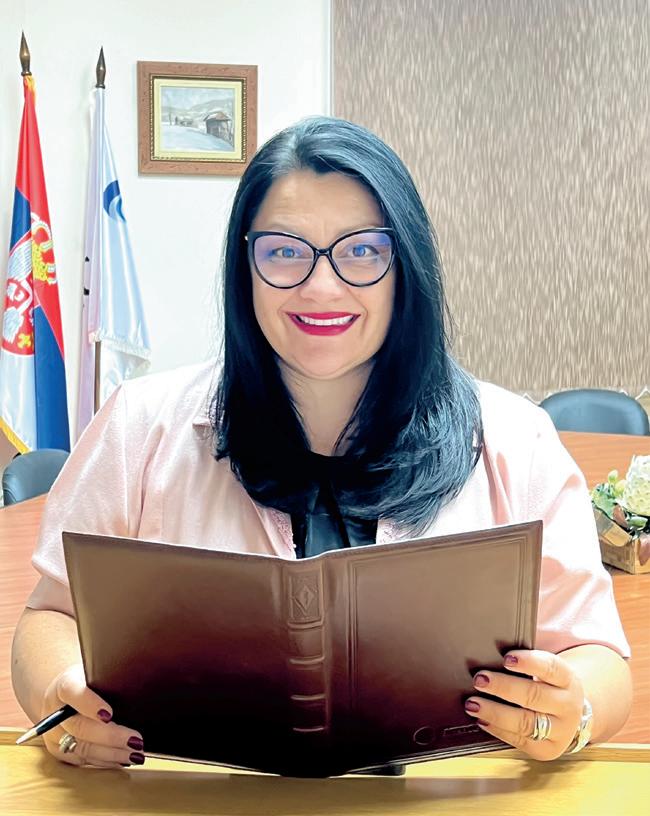
our market always has access to the latest generation of products that can provide the highest quality of dialysis for patients. We are aware that significant work is being done to find new, innovative solutions in this medical field, but I believe that we will still have to wait several more years to see the results of new scientific advances in this area of medicine.
When you began working in the field of transfusion, it was far from the advanced level we see today. Are you optimistic about further progress in this branch of medicine, particularly regarding stem cell therapy and the therapeutic use of other blood components?
— The field of transfusion and treatment with blood components is highly advanced, and the progress made in stem cell therapy has been remarkable. When we started our work, the applications we have today were unimaginable. New technologies now enable us to utilise various types of cells as part of therapies for a range of diseases and conditions, including haematological disorders, autoimmune diseases, cancer, neurological disorders and orthopaedics. The potential applications of cell therapy are extensive, with scientific research aimed at uncovering new possibilities in medicine advancing quickly in this field. Regenerative medicine is providing innovative solutions through biomedical approaches to clinical therapies. We are also proud to offer bioreactors that enable the automated production of cells and support the development of new therapies.
Service providers worldwide are actively exploring and experimenting with new offers and go-to-market models across several horizons, says Ericsson’s Antonio Passarella
Ericsson’s top man for Serbia and the Western Balkans explains that utilising the midband spectrum to handle increased capacity and throughput, along with 5G standalone for added functionality, will enhance network capabilities significantly. Here we discuss other important aspects of the adoption of a 5G network, advanced infrastructure, innovation, the experiences of other markets and more.
Given that Serbia has yet to adopt 5G technology, how crucial is it for the nation’s growth and development?
— While 4G networks have powered the app economy, a globally competitive Serbia needs more than just reliable consumer connectivity. The country requires transformational connectivity that’s made possible by high-performance mobile networks that are widely available, open and programmable. This advanced infrastructure is vital for positioning Serbia as a leading hub of industrial and technological growth. Innovations in cloud computing, AI and quantum technology will all rely on such mobile networks in order to scale effectively. In order for Serbia’s developers, innovators and industries to thrive, access to enhanced connectivity features – such as faster speeds, low-latency performance, differentiated Quality-of-Service (QoS) and high security – is essential. The foundation of this transforma-

tional connectivity is the rapid and widespread deployment of 5G. Utilising the mid-band spectrum to handle increased capacity and throughput, along with 5G standalone (SA) for added functionality, will improve network capabilities significantly. This will enable advanced applications like instant health monitoring, real-time control of industrial machinery, smart grids for renewable energy and connected autonomous mobility.
Serbia still hasn’t auctioned its 5G frequencies. How should regulators approach 5G spectrum allocation, considering the experiences of other markets?
— We would love to see governments and regulators prioritise coverage commitments from operators over the imposing of high fees for the 5G spectrum. Excessive spectrum costs can hinder the ability of operators to invest in expanding
network coverage and enhancing performance, both of which are crucial for the successful rollout of 5G infrastructure. By shifting the focus to network development requirements, regulators can ensure the more efficient and widespread deployment of 5G.
How can operators make 5G profitable?
— We see several distinct business horizons emerging on the market as 5G becomes more widely available. Service providers worldwide are actively exploring and experimenting with new offers and go-to-market models across several horizons. The first phase of monetisation for 5G is enhanced mobile broadband and fixed wireless (FWA), while differentiated connectivity solutions also represent an emerging opportunity.
This could manifest as offering a private network to enterprises or utilising network slicing capabilities to offer a differentiated service to consumers or enterprises. Sectors like mining, airports and manufacturing seek pre-packaged 5G networks for easier deployment and an improved performance. Some even envisage future office networks relying entirely on public 5G for connectivity, regardless of location.
A major opportunity for monetisation lies in network APIs. These open interfaces allow developers to easily integrate 5G capabilities into new applications. For example, APIs can enable “Quality on Demand” for autonomous fleets or seamless video streaming for live events, enhancing user experiences. APIs also support secure authentication, fraud prevention and other advanced use cases across sectors like banking, logistics and manufacturing, opening up significant new revenue streams for operators.
Although new technologies are essential for transformation, true success lies in people’s willingness to embrace these innovations, supported by adequate education, infrastructure, accessibility and inclusiveness for all citizens
The idea of smart cities – including smart technology, planning and community involvement – plays a key role in the Nordic understanding of sustainable and green communities. The Nordic Business Alliance, in close cooperation with the four Nordic embassies in Serbia (Denmark, Finland, Norway and Sweden), identified a strategic opportunity under the smart cities umbrella. “In line with our values of innovation, sustainability and inclusivity, and having in mind the fact that greener cities are also “smarter”, our Journey to Smarter Future: Building Smarter and More Sustainable Communities in Serbia came about as a natural continuation of projects and initiatives implemented over the last three years,” explains Nordic Business Alliance Executive Director Iva Petrović.
“Every journey requires a map. Our goal is to initiate the Smart Cities Roadmap for Serbia – leveraging the knowledge and experience of the Nordic countries, coupled with the good work already done in local cities and municipalities in Serbia. Aside from Nordic embassies and Nordic Edge, our other partners on this project are NALED and the Standing Conference of Towns and Municipalities,” explains our interlocutor.
“Although cities and local municipalities are key stakeholders in this project, we believe it is critical to engage and receive buy-in from key decisionmakers at the national level: the Ministry of Public Administration and Local Government; Ministry of Science, Technological Development and Innovation; and the Office for IT and e-Government,” says Petrovic.

“Sharing knowledge and ideas from Nordic countries, together with partners and stakeholders in Serbia, has been the hallmark of our association. Previous projects, such as Nordic Green and Circular Economy, are just some examples of that. The green agenda, sustainability, digitalisation, and now all that under the smart cities umbrella, continue to be engaging and relevant topics for wide audiences in Serbia.
Aside from partnerships, what would you identify as key factors for the successful implementation of this project?
— The project was launched in Kragujevac on 10th April and I’m proud to confirm that we had 200+ people in attendance, including four Nordic ambassadors, a minister, a mayor, guest speakers from both Nordic countries and Serbia, and attendees from across the country. The first success factor is always participants’ engagement – the dialogue was open, honest and constructive, topics were relevant and timely, and ideas were free-flowing. The second indicator was the positive spillover effect after the event: the extensive media coverage, broad interest in getting involved among a diverse set of constituents, and excitement to continue cooperation among partners. And, finally, validation from the Nordic Council of Ministers, who approved funding for the four Nordic embassies in Serbia to further develop initiatives and activities under the smart cities umbrella, with the Nordic Business Alliance as a partner. Two weeks from now, we will have our fist strategy and planning session to kick-off project activities for 2025.
It is important to point out that new technologies certainly help and are essential for the transformation towards smart cities, but they are not key drivers of change. The motivation still lies with people who are willing to accept these new technologies, because they see and understand the direct benefits. And, of course, that requires adequate education, infrastructure, accessibility and inclusiveness for all citizens –which we hope to accomplish through this project.
What do smart cities mean from a business perspective, either as a space for the development and marketing of products or as support for more efficient work?
— The transition to smart cities has a number of positive effects on business, the economy and sustainability. First of all, smart cities – and therefore the people who live in them – are more efficient. Public transportation works better, digital services provide a faster service for citizens and energy efficiency can reduce electricity bills etc. On the other hand, such cities create the possibility for economic growth, because there will
The Nordic Business Alliance fosters connectivity between Nordic and Serbian companies, leveraging their unique strengths to build a culture of empathy and innovation that includes everyone
be more work for companies that create smart solutions and for the banks that finance them, while the general increase in productivity creates the possibility for all businesses to make more, invest more and employ more. The positive effect this transformation has for attracting foreign investors is also important – through harmonisation with EU standards that strive towards carbon neutrality and zero waste business. Finally, but perhaps most importantly, this transformation enables a faster green transition, which implies sustainability through reduced environmental pollution and thus contributes to citizens having a healthier and cleaner living environment.
How is the Nordic business community integrated in achieving the goals of the NBA?
— We have aimed since our inception to be a productive and relevant platform that drives positive change in the business environment and society at large. Our initiatives change from year to year, based on shifting priorities and the external context, but our goal remains the same: promoting unique Nordic values and business practices, focusing on innovation, sustainability, transparency, environment and responsible business.
The Nordic business community and our members are at the heart of everything we do. As a relatively small organisation, we are flat, flexible and nimble. Each member contributes to strategy creation and their company priorities are translated into the initiatives we undertake. We had a number of happenings this year at which members co-hosted events with the Nordic Business Alliance, focusing on topics ranging from AI, mental health & art and HR, to smart recycling and breast cancer prevention, to name just a few. We firmly believe that business is the catalyst for broader social change and will continue to drive this agenda in 2025 and beyond.
How connected are Nordic companies to innovative companies in Serbia?
— Innovation is the cornerstone of our organisation. Across industries and sectors, we attract innovative Serbian companies to join our network, while we partner with other business associations who share the same values. A considerable number of Serbian companies in our association have extended their business interests to Nordic markets and built strategic partnerships with Nordic companies, both in Serbia and in the Nordics.
The cross-pollination of ideas, expertise and approaches to business, coupled with diverse cultural heritage, is a proven strategy to achieve more breakthroughs. The Nordic Business Alliance nurtures connectivity between Nordic and Serbian companies, recognising the unique strengths that each side brings to the table. This is about building a culture of empathy and innovation, where everyone feels part of something bigger.

The Nordic welfare system is an economic asset, countering old misconceptions about welfare and competitiveness. Its strategic investment in social support creates resilient economies and a productive workforce, essential for global competitiveness
The Nordic welfare model, long admired for its comprehensive social support, offers not only security for its citizens but also a stable foundation for economic prosperity. Contrary to traditional critiques that welfare spending undercuts economic competitiveness, recent studies underscore the benefits of the Nordic approach, where welfare policies bolster the private sector by fostering high employment, resilience in economic downturns, and sustained growth.
Professor Anton Hemerijck of the European University Institute in Florence has been a vocal advocate of this model, explaining its benefits at the Nordic Welfare Forum 2023 in Reykjavik. The professor highlighted how, despite high public spending, Nordic welfare systems enhance economic resilience, enabling these countries to remain competitive on a global scale. “The welfare state,” he argues, “is an asset, not a liability.”
This stands in stark contrast to beliefs prevalent in the 1980s and 1990s, which dismissed welfare spending as a drag on growth.
The core of the Nordic welfare system is its investment in citizens from early childhood through to old age. Countries like Sweden, Denmark, and Norway allocate substantial resources to public services such as childcare, health, and education. This approach ensures that women can participate actively in the workforce, leading to higher overall employment rates and a more balanced labour market.
By providing accessible childcare, the Nordic model allows both parents to work, increasing household income and reducing poverty. Furthermore, when children have access to quality education and healthcare, they enter the workforce as more productive individuals. Hemerijck compares this to the American system, which, while effective in certain areas, lacks the com-
prehensive support that enables sustained high employment levels across different demographic groups.
In times of crisis, the Nordic model has proven more resilient than its counterparts. Following the 2007–2009 global financial crisis, countries with strong welfare states fared better than those with deregulated labour markets. For example, while employment rates in the United States fell dramatically, Nordic countries maintained more stability due to robust social safety nets and active labour policies.
What sets the Nordic model apart is its role in stabilising the economy during downturns. The welfare state is not merely a redistributive mechanism but a form of insurance. Through various

forms of solidarity—such as “Robin Hood” solidarity for minimum income, “Piggy Bank” solidarity for contingencies, and “Stepping-Stone” solidarity for access to quality services—the Nordic model secures a minimum quality of life for all citizens. These policies not only provide financial security but also contribute to social cohesion, making societies more resilient to economic shocks.
Nordic welfare states have also shown remarkable adaptability. They have embraced policies that address modern challenges, such as retraining older workers, promoting active ageing, and supporting work-life balance. By investing in lifelong learning and upskilling programs, the Nordic states have created a workforce that can adapt to changing economic needs, providing a continuous pipeline of talent to the private sector.
A robust welfare system ultimately benefits the private sector by enhancing productivity and
creating a reliable workforce. Investment in early childhood education, followed by access to higher education and vocational training, raises the productivity of new entrants to the labour market. The Nordic model also offers a conducive environment for innovation by ensuring that all citizens have the opportunity to reach their potential.
This welfare foundation enables businesses to operate in a stable environment, where employees are healthier, more skilled, and more focused on their work due to reduced financial insecurity. High public investment in education, healthcare, and job security leads to a more resilient workforce, which in turn supports a productive and innovative private sector.
Today, many European countries are revisiting the assumptions that once vilified the welfare state. This shift, often referred to as the “normalisation” of the Nordic model, reflects a growing recognition of the value of social investments.
Countries across Europe are increasingly looking to the Nordic countries for insights into creating societies that balance economic growth with social wellbeing. As the global economy faces new challenges—from automation to demographic shifts and climate change—the Nordic model provides a promising framework for building resilient economies equipped to handle future uncertainties.
The welfare state is an economic asset, fostering resilience, innovation, and global competitiveness

Exploring how Serbia is embracing innovation and sustainability to build smarter cities and improve quality of life for its citizens
According to forecasts, by 2050, as much as 60% of the world’s population will be living in smart cities. This revolution in urban living will significantly shape the future of Serbia, but the question arises— what exactly are smart cities? Drivers often experience traffic congestion. Smart cities use systems to reduce congestion and shorten travel times. Digitalisation of public administration was another characteristic of smart cities—tasks like registering a business or obtaining a birth certificate were completed online, without waiting in queues. Furthermore, smart cities were also characterised by public lighting systems that adjusted to human movement and presence, saving energy. These were just some examples of how smart cities improved the quality of life for citizens.
The project Journey to a Smarter Future: Building Smarter and More Sustainable Communities in Serbia, organised by the Nordic Business Alliance, was launched in close cooperation with four Nordic embassies in Serbia (Denmark, Finland, Norway, and Sweden). The project partners were the National Alliance for Local Economic Development (NALED) and the Standing Conference of Towns and Municipalities (SCTM), under the motto of shared
values of innovation, sustainability, and inclusivity. The project received substantial support from the Ministry of Information and Telecommunications and the Ministry of Public Administration and Local Self-Government.
As the seat of the National Data Centre, Kragujevac was chosen as the starting point for the project’s launch. The Minister of Information and Telecommunications, Mihailo Jovanović, officially opened the event and emphasised: “The city of Kragujevac, recognising digitalisation as the most important catalyst for innovation, has done more than most cities and municipalities in the area of open data. It currently ranks second in the number of open data resources, with 215 resources available on the national Open Data Portal. Such data is essential for efficient planning, decision-making, and delivering quality services to citizens, as well as for building smarter and more sustainable communities.”
The Minister also highlighted the importance of the Leap into the Future – Serbia 2027 programme for the citizens of Serbia, from further raising living standards, including average wages, pensions, and minimum wages, to intensive modernisation, industrialisation, infrastructure development, and the integral development of the entire country. “There is no part of Serbia that is not covered by this programme, and Kragujevac is one of the cities that, thanks to previous state investments in digitalisation and industrialisation, has transformed from being technologically behind to becoming Serbia’s Silicon Valley, where projects for further modernisation are well underway.”
H.E. Kristin Melsom, Ambassador of Norway to Serbia, North Macedonia, and Montenegro, emphasised that environmental protection and sustainable development had been key in the Nordic region for decades. “In our pursuit of a sustainable and green future, the idea of smart cities, which combine technology, planning, and community engagement, plays a crucial role. International cooperation is essential in this context, as the challenges are interconnected and require a joint response.
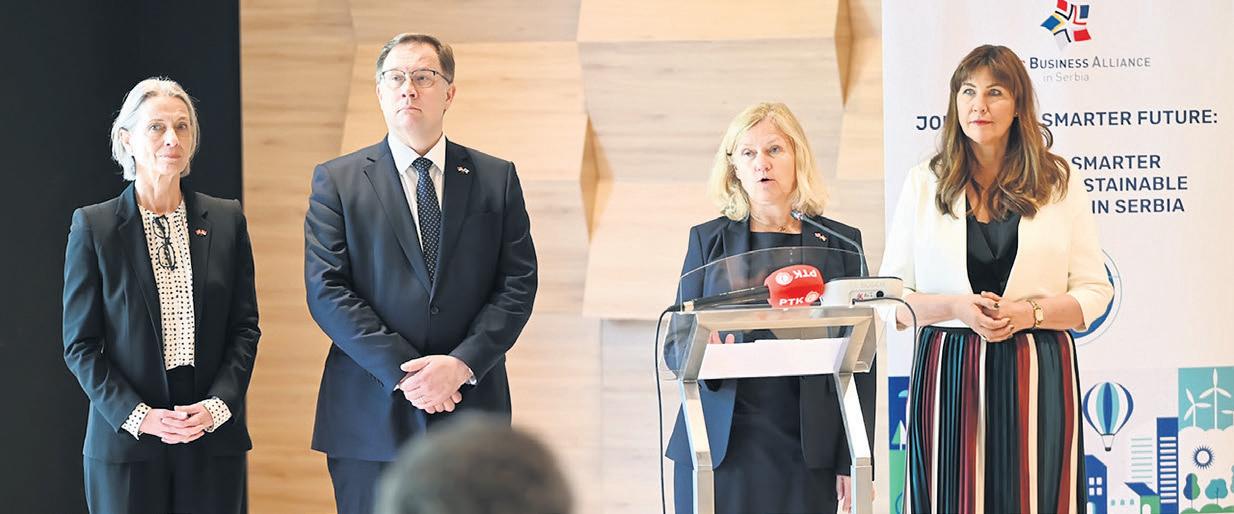
This conference was an opportunity to exchange ideas and build partnerships towards these goals.”
The main goal of the project is to create a roadmap for the development of smart cities in Serbia, said Iva Petrović, Executive Director of the Nordic Business Alliance, adding that a strategic opportunity had been identified to approach this topic systematically. “By using the knowledge and experience of Nordic countries, in cooperation with decision-makers in Serbia, we will define priorities and strategies to ensure that Serbia becomes part of the global smart cities network as soon as possi-
With the support of Nordic countries, Serbia is taking significant steps toward building smarter and more sustainable cities, enhancing both infrastructure and the overall quality of life for its citizens
ble. Activities will continue in other cities, with the aim of fostering connections and cooperation, as well as sharing knowledge and experience throughout Serbia. An integral part of this project are the member companies of the Nordic Business Alliance, with a special focus and support from Nordic Business Alliance.”
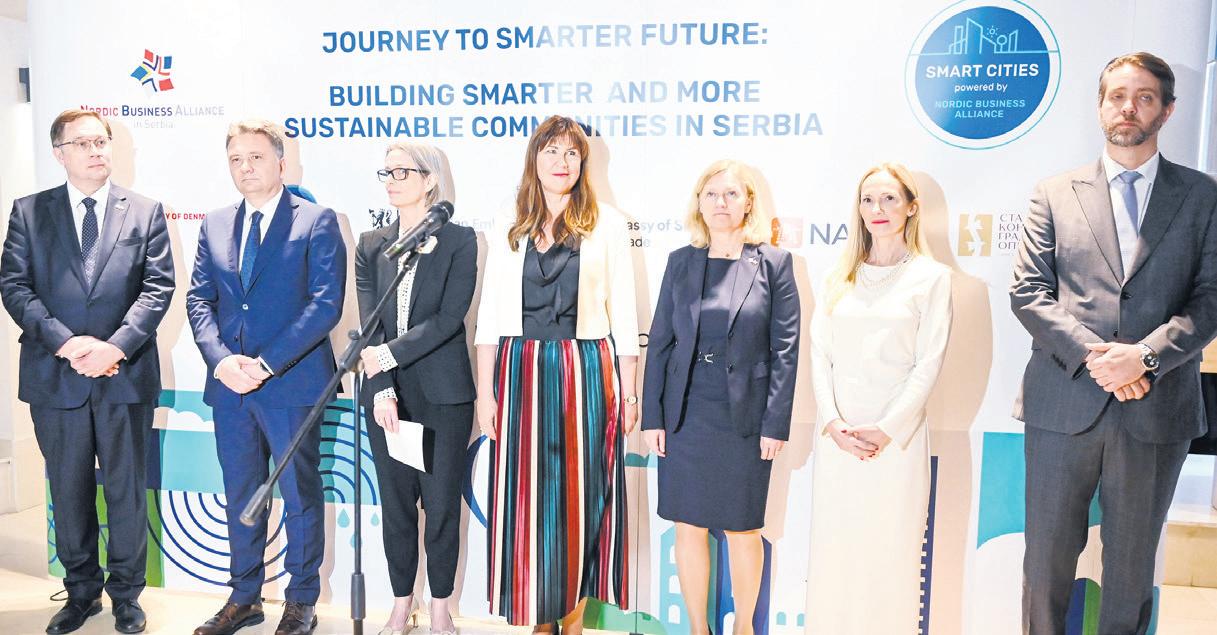
“The era of smart cities has arrived, where modern technology allows us to ‘read’ the city. It is important to find optimal solutions that meet the needs of all citizens while saving time, energy, and money,” said Nikola Dašić, Mayor of Kragujevac.
The project’s launch in Kragujevac combined a conference with two interactive workshops. Solutions that made cities smarter in terms of infrastructure, public services, and environmental protection were presented—areas identified as key priorities by NALED’s study of 49 local municipalities. Renowned experts from Nordic countries shared their knowledge and successful examples from these fields with the attendees. Additionally, there were discussions on examples from Serbia, demonstrating how smart city infrastructure could improve citizens’ lives.

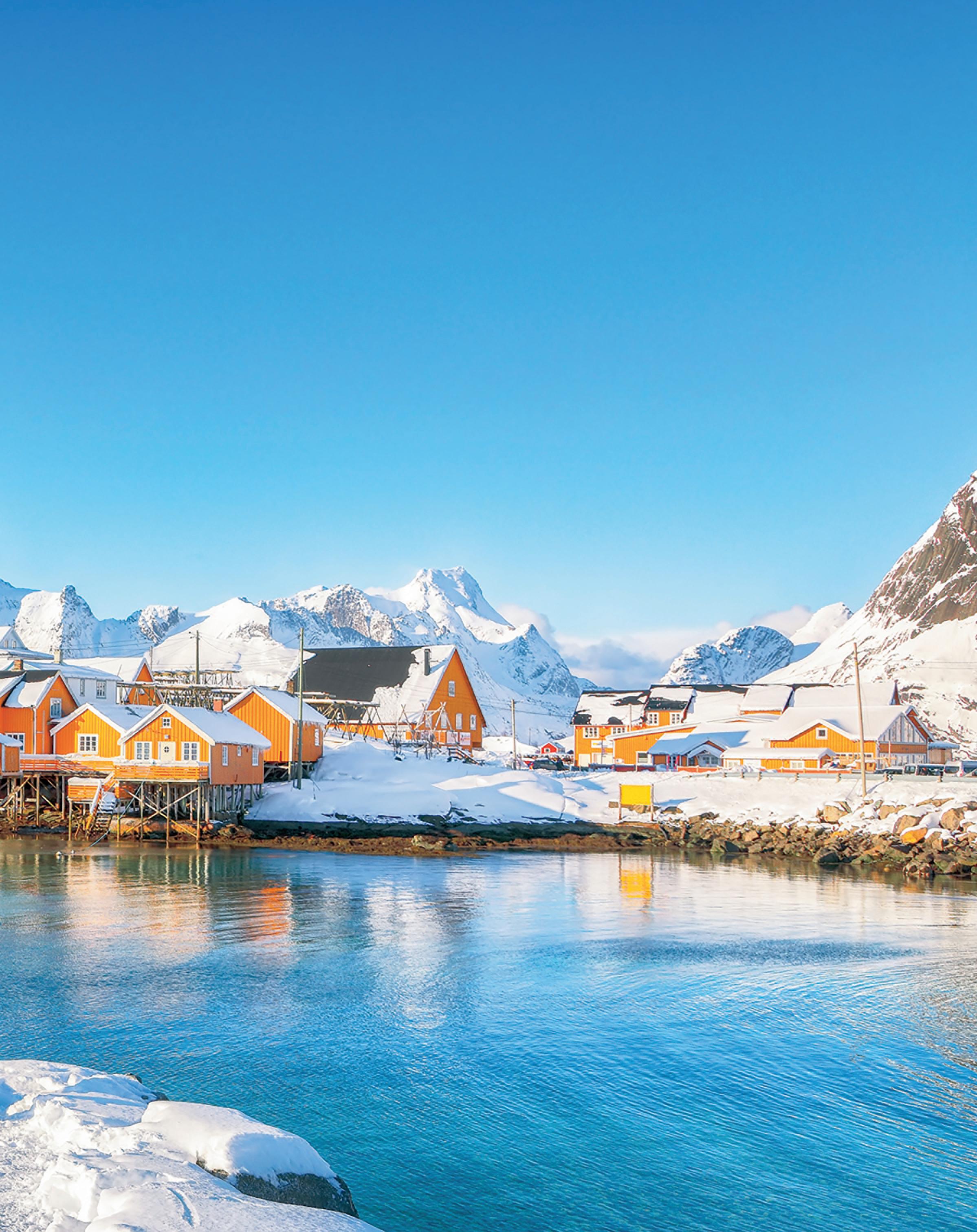
Nordic countries are becoming increasingly popular as travel destinations, thanks to their stunning nature, welcoming atmosphere, and unique experiences

As more travellers seek destinations that offer breathtaking landscapes and a sense of tranquillity, the Nordic countries—Denmark, Norway, Sweden, and Finland—are rapidly rising on the list of favourite travel spots. With their long summer days, captivating northern lights, and famously happy people, these countries offer an escape from the ordinary and a gateway to unparalleled natural beauty.
Recent figures from a survey conducted in Germany reveal that the Nordic region has now sur-
The Nordic countries are emerging as a top choice for travellers seeking unique experiences, with their reputation for safety, nature, and high-quality standards playing a key role in this rise
passed traditionally popular holiday destinations such as Turkey and Greece. Interest is also growing in other German-speaking nations, as well as in Belgium and the Netherlands.
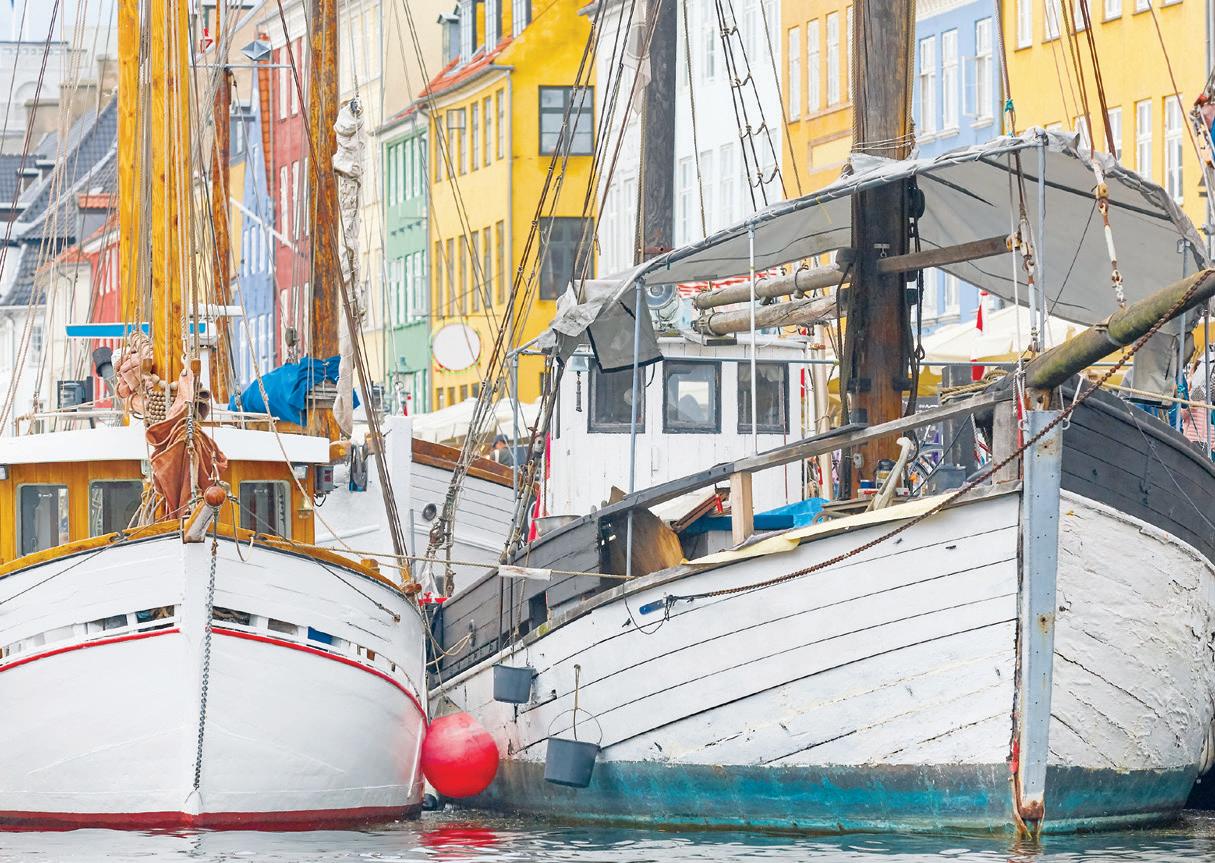
According to the tourism analysis conducted by the StiftungfürZukunftsfragen(Foundation for Future Studies), the region of Scandinavia has become an increasingly popular choice for European travellers. The analysis surveyed 3,000 individuals aged 18 and above in Germany regarding their travel preferences and behaviour. The results show that Scandinavia (Denmark, Norway, Sweden, and Finland) ranks as the third most popular European destination, with a notable increase in popularity compared to 2022, while other popular destinations, like Turkey and Greece, have seen a decline.
Professor Ulrich Reinhardt, Scientific Director of the Foundation for Future Studies, highlights the strong positive image associated with the Nordic countries. “Travellers often link the Nordic region with pristine nature, safety, high-quality
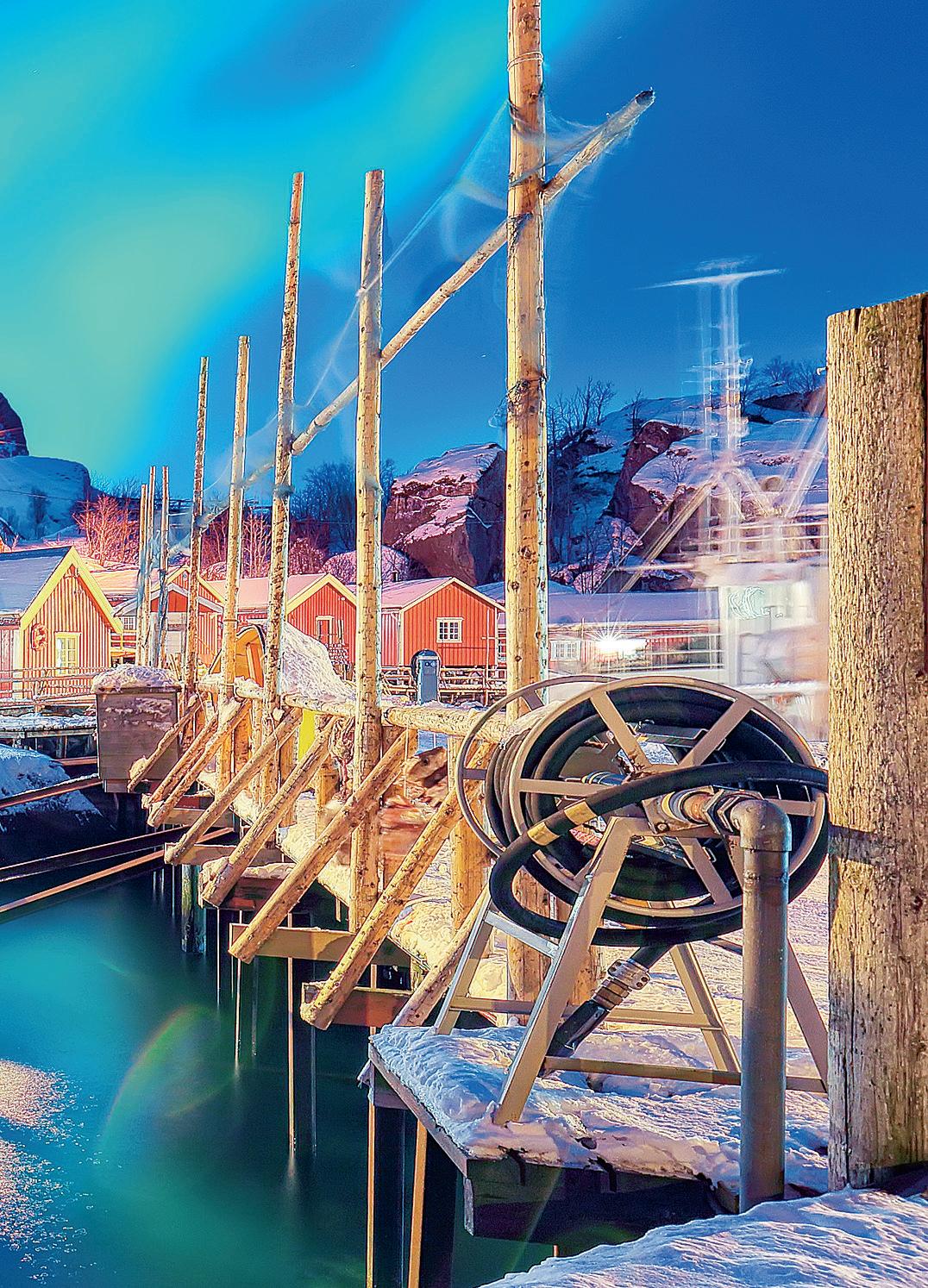
standards, a welcoming atmosphere, and warm hospitality,” Professor Reinhardt explains. This positive image is further reinforced by the accessibility of the region, as many tourists opt for self-organised trips, taking advantage of the ability to drive to their Nordic destinations.
The growing appeal of the Nordic countries has also led to a surge in air travel options. Airlines have recognised the rising demand for Northern European destinations and have responded by expanding their routes. For instance, Eurowings has almost doubled the number of seats available for travel to Scandinavia compared to 2019.
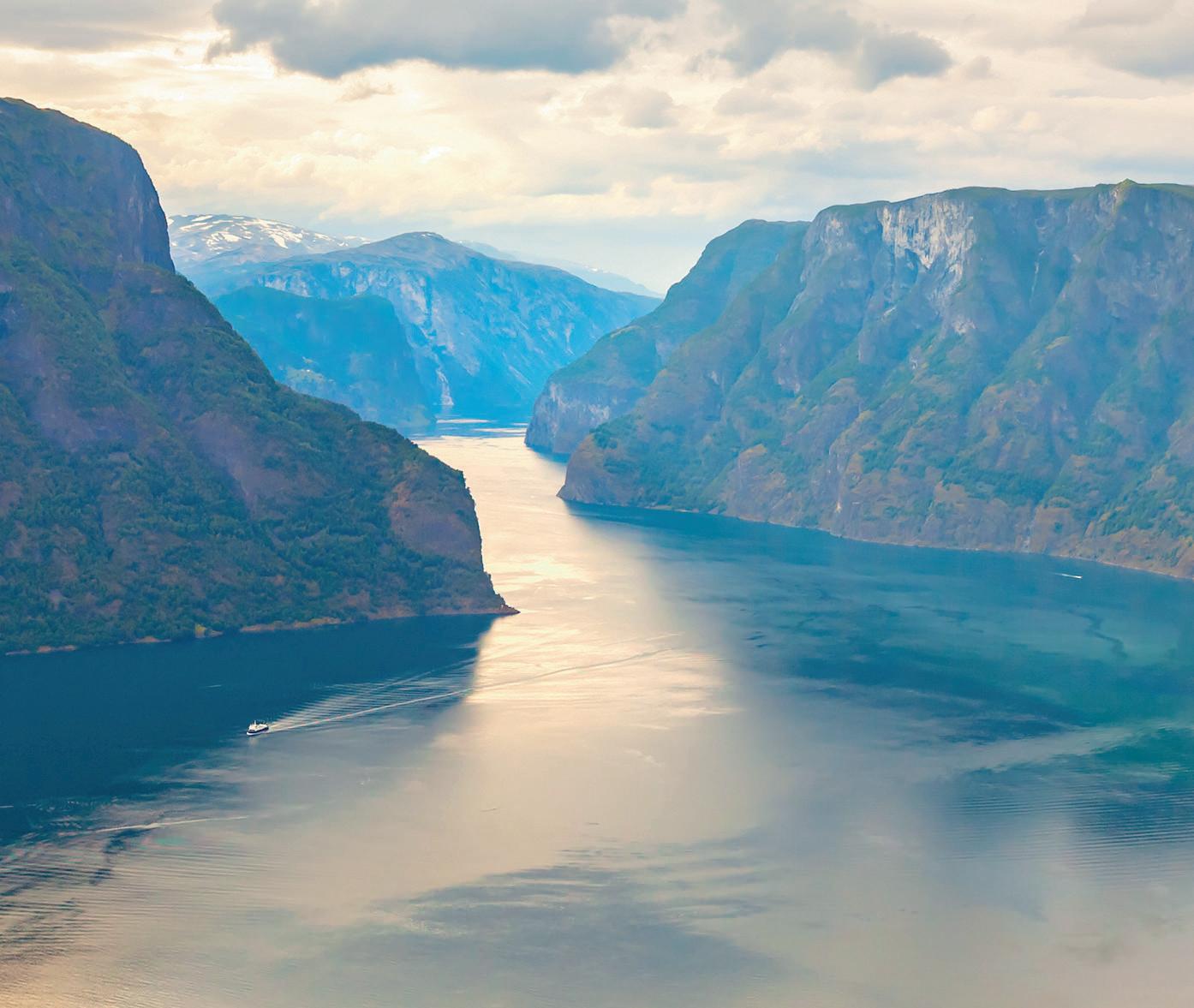
With their blend of modernity and untouched nature, the Nordic countries are fast becoming a favourite destination for travellers seeking both adventure and tranquillity
New flight paths include a summer route from Hanover to Stockholm (Sweden) and a winter route from Düsseldorf to Kajaani (Vuokatti, Finland). Lufthansa has expanded its offering with direct flights from Munich to Trondheim (Norway) and Oulu (Finland), while Widerøe now provides direct flights from Brussels to Bergen (Norway), opening the gateway to the iconic Norwegian fjords.



Amalienborg is the official residence of the Danish royal family, situated in Copenhagen. The palace complex of Frederick VIII features four identical Classical façades, essentially four palaces, each adorned with Rococo interiors, arranged around an octagonal courtyard.